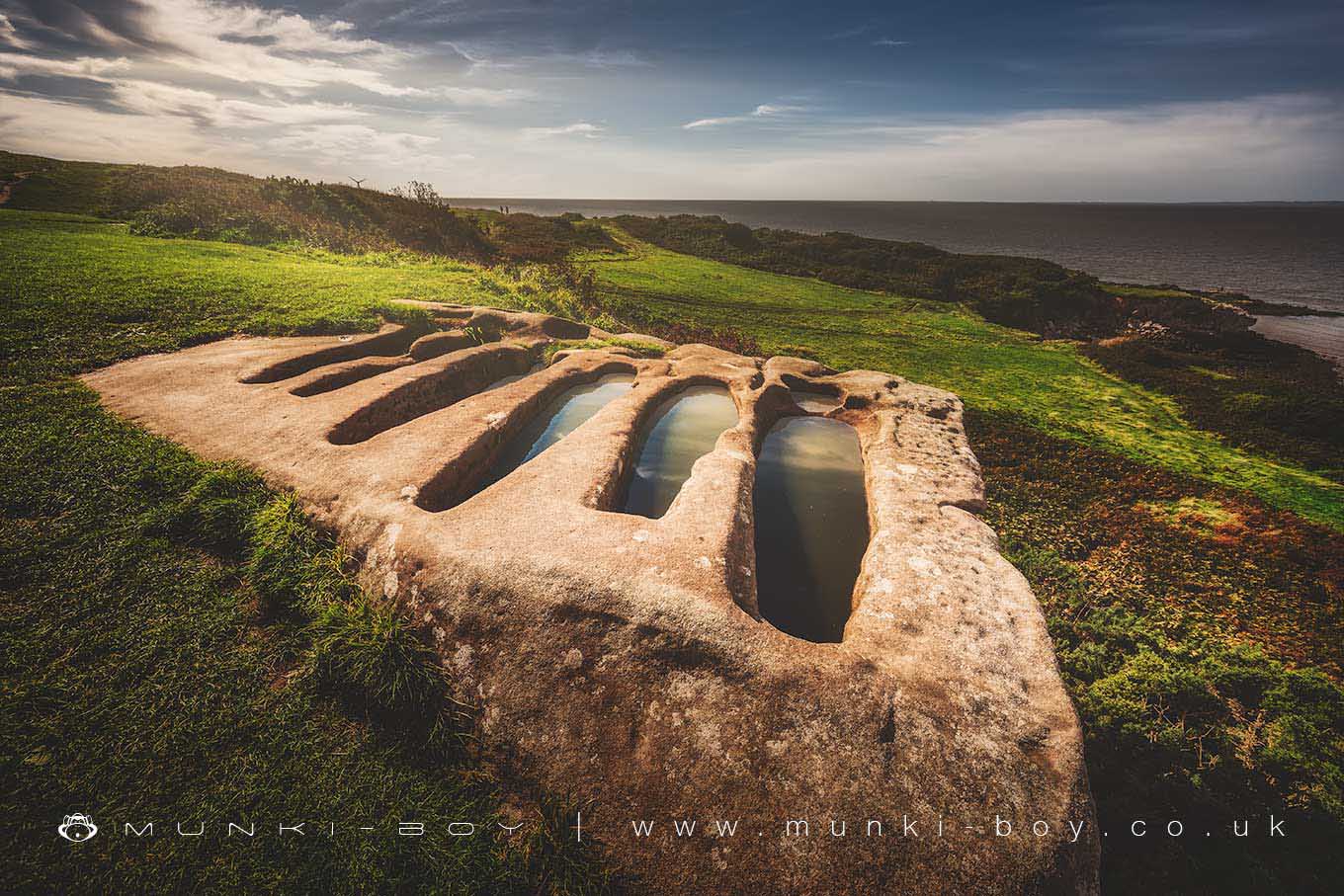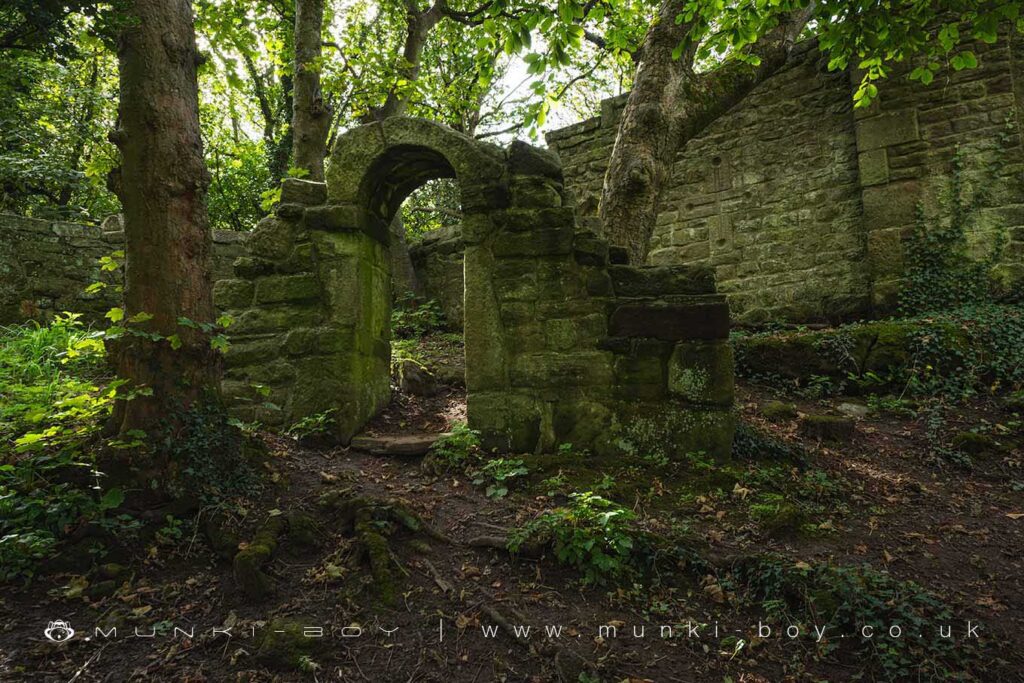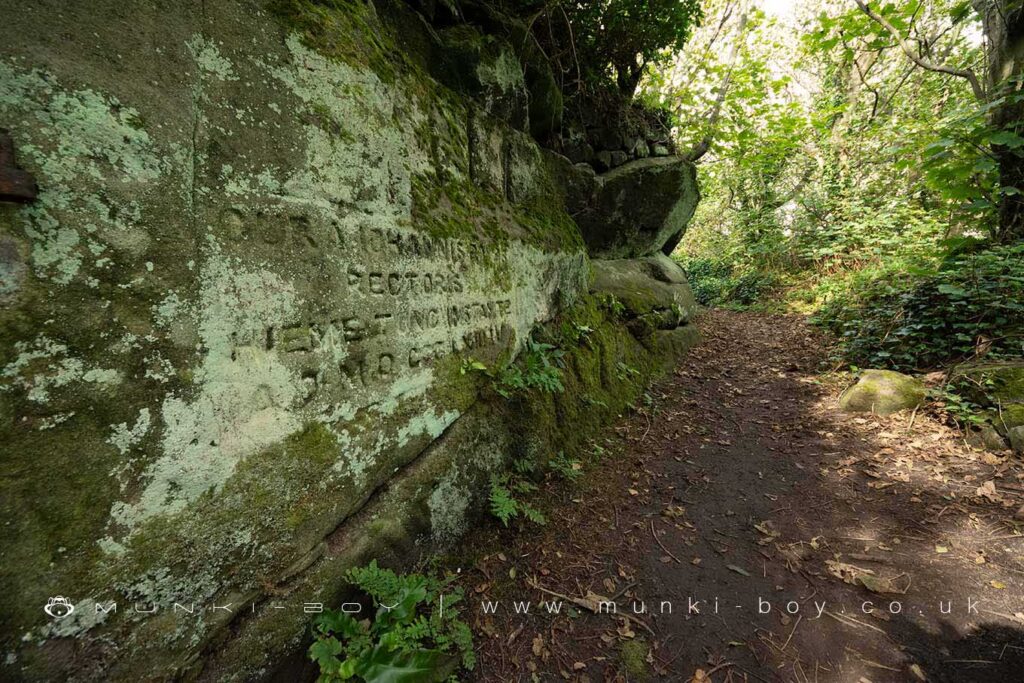
St Patrick's Chapel Heysham (ruin)
The ruins of St. Patrick’s Chapel are modest-looking despite the wide-angle views out to sea and across to cumbria and the Lakeland fells, but on exploration the old chapel holds many interesting clues to its ancient heritage.
St Patrick’s Chapel is thought to have been built as a replacement for an earlier and smaller chapel, but the remains of the current “building”, would indicate it was only around 27 feet by 9 feet with a single window and door. Elements of the chapel very-probably date back to around the 9th Century, in particular the arched doorway on the chapel itself.
Heysham Rock Cut Graves
The rock-cut graves at St. Patrick’s Chapel are of particular interest, being fairly rare in England, other examples being in Northumbria and Ireland. The stone lids are long-since missing from the monument but filled with rainwater they are highly photogenic.
There are a few other stone graves nearby on the other side of the chapel building – one of which is very small.
The site was investigated and restored by a rector back in the 19th Century as is dedicated on a plaque at the back of the nearby churchyard of St. Peter’s. Of more interest however, an investigation in the 1970s revealed small cemetaries beside the old chapel dating to the 10th and 11th Centuries.





Local History
Historic monuments near St Patrick's Chapel Heysham (ruin)
- Cockersand Premonstratensian Abbey – 7.97 km away
- Glass melting and annealing workshop; part of Shrigley and Hunt’s stained glass manufacturing workshops – 6.47 km away
- St Patrick’s early Christian chapel and associated cemetery, Lower Heysham – 0.01 km away
- Part of a Roman fort and its associated vicus and remains of a pre-Conquest monastery and a Benedictine priory on Castle Hill – 6.44 km away
- High cross in St Peter’s churchyard, Heysham – 0.07 km away
- Torrisholme bowl barrow – 5.61 km away
- Glasson Dock – 6.59 km away
